7 Tips for Transitioning Back to the Office After COVID-19
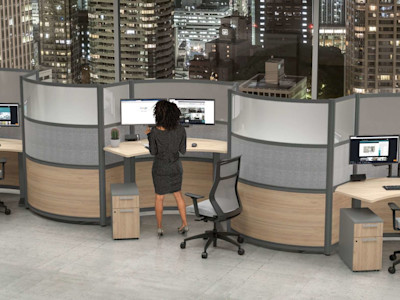
The pandemic forced a workplace shutdown over two years ago. This global shutdown caused offices around the world to shift to a remote working model overnight. There were bumps and bruises along the way, but the workforce adapted. And after this extended WFH period, many organizations and employees are continuing to struggle with the idea of coming back to the office after COVID-19. Many of the mandates and restrictions have been eliminated. But many employees are still feeling stressed about the return to onsite work. In fact according to a recent survey, more than half of Americans are still anxious about returning to work. While we can't change the commute or the fact that in-office work means no more pajamas, we do believe that these tips will help make the return to the office a bit easier.
1. Post-COVID Office Design Matters
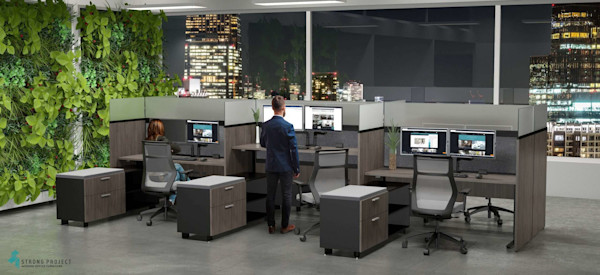
The office is more than the building where you go to work. It's a place where we get together to solve problems, collaborate, and socialize. It also develops the sense of belonging and community and connection that is so vital to us as humans. But the post-COVID office needs to work even harder to meet the needs of employees.
Many employees are still feeling stressed about the return to onsite work.
The two biggest reasons why post-COVID office design matters are the retention of current employees and attracting new ones. When choosing a place to work employees know that they have options when it comes to office environments and working cultures. And they recognize the types of organizations and cultures that will best support their goals and wellbeing.
2. Include Social Distancing Furniture
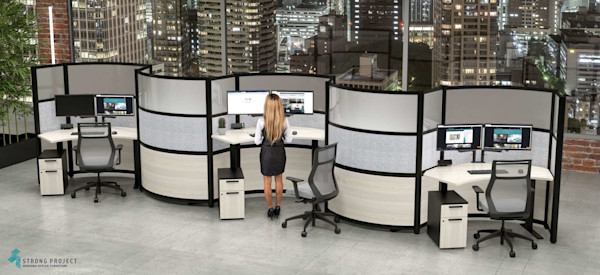
As we are returning to work in increasing numbers, protective methods like social distancing furniture are needed to ensure the best and safest environment for employees. If your employees were used to working in an open office environment, consider adding easily sanitized workstations with protective screens. The higher protective screens in this sit-stand configuration provide increased protection while allowing employees to still feel connected to their teams. The quality of the air throughout the office should be addressed as well. Many organizations are investing in air purifiers. These systems can improve health and wellbeing and further protect the office from the spread of viruses. Air purifiers are added to the ventilation systems in office buildings and add powerful clean elements to remove smoke, dust, and airborne pathogens.
3. Allow Employees to Set the Pace
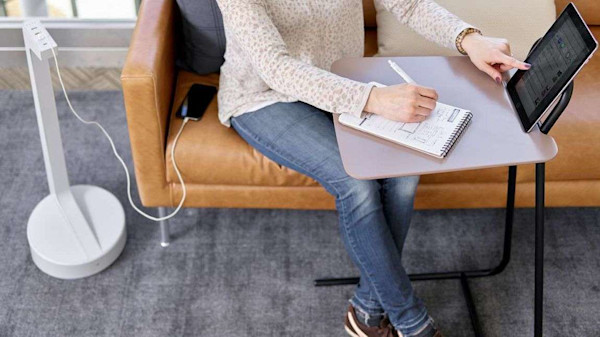
The transition back to the office should be just that. A transition. Many employees have been working completely at home for the better part of two years. Jumping to a Monday to Friday, nine to five could be quite a shock. Start slowly. Encourage your remote workers to begin with 1-2 days in the office. If you already have hybrid workers, this shift should be easy to implement. For your hybrid team, encourage them to add one additional day to their current number. Additionally, you could allow for employees to work five days in the office, but only mornings or afternoons. Not both.
In reality, requiring employees to come to the office full time might not be the best option.
Teams have been successfully working from home for two years. A return to the office is not time-sensitive so there is no need to rush. And in reality, requiring employees to come to the office full time might not be the best option. “Companies need to think through what, exactly, they want to accomplish by bringing people back, why, and be transparent with their employees,” says Elise Freedman, a workforce transformation practice leader at Korn Ferry who helps companies coordinate their return-to-office plans.
4. Communicate about Going Back to the Office After COVID-19

When it comes to making changes, communication is key. Not only do employees want to know why they should be back in the office, but they want to have input into what that office looks like. The reasons to come back need to make sense and be compelling. According to a study by The Future Forum, 44% of executives who worked remotely through the pandemic want to return to the office full time. Only 17% of employees felt the same way. The office needs to change to meet their needs. A report from Microsoft showed that 52% of workers said that they are thinking of switching to a full-time remote or hybrid job in 2022. Allowing input into the return to the office after COVID could help shape the right policies for your team. Talk to your team about what draws them to the office. If it is collaboration and community, ensure your post-COVID office design supports it. Each team will have different things that bring them to the office. Instead of requiring them to come back, create a space that they choose to be in more often.
5. Consider Alternative Working Models
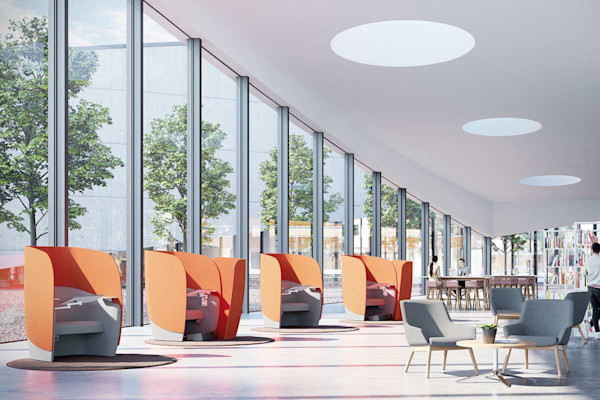
Many companies want things to go back to normal. To how we operated pre-pandemic. But the office has undergone a fundamental shift. Employees and employers know that work can be done anywhere. Productivity in most industries was not affected. But remote working has taken its toll. There has been a definite effect on the creation and maintenance of company culture. Additionally, many employees have expressed feelings of isolation and loneliness. And for others, the ability to not separate work from home has been an issue. How important is community and company culture to the success of an organization? Very. Especially when it comes to attracting and retaining talent. There are many working models available today. For some companies, remote working may still be what is preferred. For others a fully in-person workforce is ideal. But increasingly, a hybrid model has emerged. This increased flexibility seems to be meeting the needs of many as they transition back to the office after COVID-19.
6. Remain Flexible
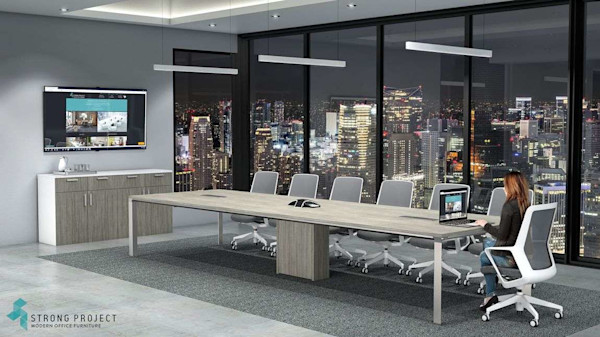
The bottom line is that no two workers are the same. What works well for one person, often doesn't for another. It is more important than ever that the workplace is flexible. Flexibility in the workplace doesn't have to just revolve around how many days they are in the office. If in-person work is a priority for your organization, consider offering flexibility in other areas. Maybe it is in the days of the week the employee works or the number of hours in each day. Or maybe it is staggered start and end times. But flexibility doesn't have to end there! The possibilities are endless in the options that you can offer your employees. The increased flexibility reduces burnout, helps employees prioritize their families, boosts productivity, improves morale, and has a direct impact on health and wellness.
7. Revisit Strategies Often
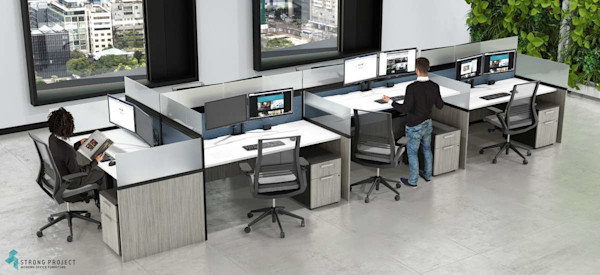
What works today for your team might be different tomorrow. If the last two years have taught us anything, it is that things change and quickly. Creating a plan for your team is wonderful, but be prepared to make changes. As we mentioned above flexibility and communication are crucial. Take time at regular intervals to check in with your team. Ask questions and really listen as you explore how the return to the office after COVID is really going for your team. But most importantly, use their feedback to continually evolve your office policies. Design the ideal post-COVID office today! Don't Do This When You Return to Work After COVID What Employees Want in the Post-COVID Workplace Stay Healthy When You Return to Work



